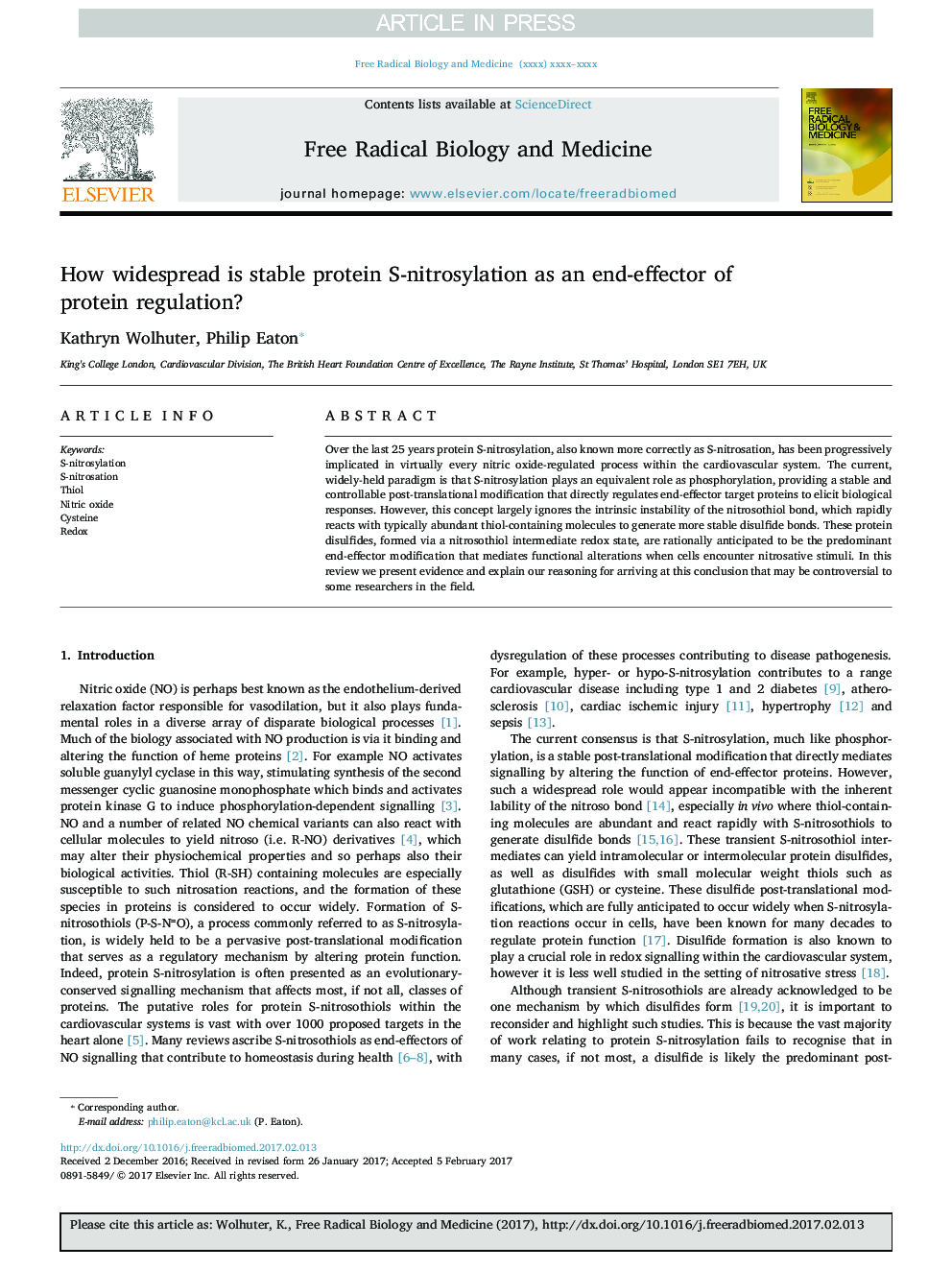| Article ID | Journal | Published Year | Pages | File Type |
|---|---|---|---|---|
| 5501896 | Free Radical Biology and Medicine | 2017 | 11 Pages |
Abstract
Over the last 25 years protein S-nitrosylation, also known more correctly as S-nitrosation, has been progressively implicated in virtually every nitric oxide-regulated process within the cardiovascular system. The current, widely-held paradigm is that S-nitrosylation plays an equivalent role as phosphorylation, providing a stable and controllable post-translational modification that directly regulates end-effector target proteins to elicit biological responses. However, this concept largely ignores the intrinsic instability of the nitrosothiol bond, which rapidly reacts with typically abundant thiol-containing molecules to generate more stable disulfide bonds. These protein disulfides, formed via a nitrosothiol intermediate redox state, are rationally anticipated to be the predominant end-effector modification that mediates functional alterations when cells encounter nitrosative stimuli. In this review we present evidence and explain our reasoning for arriving at this conclusion that may be controversial to some researchers in the field.
Related Topics
Life Sciences
Biochemistry, Genetics and Molecular Biology
Ageing
Authors
Kathryn Wolhuter, Philip Eaton,
